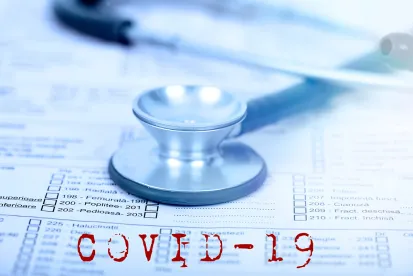On July 15, 2020, the Virginia Department of Labor and Industry’s Safety and Health Codes Board voted to approve an emergency temporary standard on infectious disease prevention (§16 VAC 25‐220), becoming the first state to enact comprehensive COVID-19 workplace safety requirements. The regulation comes after Virginia Governor Ralph Northam directed the creation of enforceable workplace safety regulations in May. The final standard will become effective upon publication, which is expected next week.
The standard will impose mandatory requirements on all employers within the jurisdiction to conduct workplace exposure assessments and determinations, fulfill employee notification requirements, and operationalize employee access to exposure and medical records. Key elements of the regulation are expected to require employers to:
-
assess their workplaces for hazards and job tasks that can potentially expose employees to COVID-19 and classify each job task based on potential exposure as “very high,” “high,” “medium,” or “lower” risk levels of exposure, and for each such risk level, implement certain work place requirements to protect employees.
-
develop and implement policies and procedures for employees to report when they are experiencing symptoms of COVID-19 and provide for the removal of such employees from the work site until cleared to return.
-
establish a system, consistent with federal law, to receive notice when employees test positive for COVID-19 and to inform others who may have been exposed, including employees, other employers with employees at the same work site, the building or facility owner, and, in certain situations, the Virginia Department of Labor and Industry.
-
increase provision of handwashing stations, hand sanitizing and enhanced disinfecting requirements.
-
provide flexible sick leave policies.
-
permit telecommuting and staggered work shifts to allow social distancing where feasible.
-
develop and implement "return to work" policies and procedures using symptom-based or test-based strategies.
-
ensure that employees practice physical distancing, including by limiting worksite density.
The temporary standard sweeps broadly and may require: (1) administrative and work practice controls, such as prescreening employees prior to the start of a shift, (2) the use of personal protective equipment, and (3) engineering controls of air-handling systems.
Once effective, this new standard will remain in effect for up to six months,depending upon the expiration of the Governor’s declared State of Emergency and whether the standard is superseded by a permanent regulation.
The Virginia Occupational Safety and Health Program has stated that it is developing training and outreach materials pursuant to the standard and will make them publicly available in the near term. These will include industry-specific training PowerPoints for employers and employees explaining the standard, an infectious disease preparedness and response plan template, and a flowchart for determining how to classify job tasks by hazards employees are potentially exposed to for “very high”, “high”, “medium”, and “lower” exposure risk levels. Once the new standard goes into effect, covered employers will have 30 days to train employees on the standard and 60 days to develop their infectious disease preparedness and response plans.
Further information will follow once the final standard is published.






 />i
/>i

